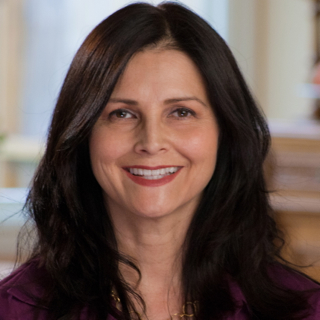 The Ten – Lifestyle Choices to Shift the Aging Process
The Ten – Lifestyle Choices to Shift the Aging Process
Author: Dr. Jeanette Ryan
In our complex and sometimes sly modern world, ordinary experiences can put us at greater risk for unhealthy aging and disease. Simple lifestyle choices can significantly tilt the odds in your favor for a vibrantly healthy, active journey into the Golden Years. Here’s some of my faves:
1. Forego the convenience of plastic. From take out food to gourmet hot drinks to prepared food in packages, we are constantly exposed to plastic. My favorite? Those K-cups! Pressing boiling water through a plastic cup, and then drinking it in a disposable hot cup is a direct double infusion of BPA or Bis-Phenyl A, a potent endocrine disruptor that contributes to obesity, prostate cancer and feminization in men, estrogen toxicity and estrogen based cancers in women. That goes for Styrofoam too.
2. Go for the small inconvenience of constantly using your own ceramic hot cup (if you hand it over when you order your drink, you usually get a 10 cent discount along with the benefit of lowering your BPA load), glass water bottles (I love these by Life Factory http://www.lifefactory.com), and always take prepared food out of the packaging to heat in in your own non-reactive cookware.
3. Forego the unnecessary radiation of CT scans…for just about every test, there is an MRI version of a similar test. And while a mammogram is not a CT scan, it is still quite a dose of radiation. Other safer breast scans: thermography and SonoCine, an ultrasound scan. There is one low dose radiation CT Scan worth doing: the Virtual Colonoscopy has numerous benefits over the Optical Colonoscopy. And for ambient radiation, optimize your iodine levels to protect the thyroid, the gland most vulnerable to radiation. First confirm you do not have hidden auto-immunity against your thyroid with a simple blood test: ATGA, ATPO.
4. Harness the powerful efficiency of Burst Exercise….
5. Forego the late night munchies. Staying up past your point of tired usually kicks in the craving for sweets and quick energy like chocolate and starches. This in turn fires up your stress hormones and makes it far less likely you’ll sleep restoratively thereby accelerating aging, and contributes to stubborn weight gain.
6. Go for lights out by 10pm…the benefits
7. Forego caffeine abuse and use it smartly instead. So many of us are overstressed and under rested and have coffee the first thing on empty. After fasting all night, this necessarily puts the body into a blood sugar rollercoaster, contributing to weight gain, pre-diabetes, mood swings, and high carb binges at the afternoon slump, also caused in part by AM coffee on empty. Instead, go for smart use of tea or coffee: have it with a meal, preferably lunch. Better yet, use caffeine only when needed, not as a daily habit.
8. Forgo technology damage…MRI studies have shown that holding a cell phone to your head for a 10 minute conversation increases inflammation of the brain. If Alzheimer’s or Dementia are diseases you’d like to forego, make sure you always use an earbud, car Bluetooth (not the ear piece) or speakerphone. Or better yet, talk on your corded landline (cordless also emit EMFs). When reading or gaming on a wifi enabled device, put it on Airplane Mode. Plug your computer into cabled Ethernet.
9. Go for adequate protein at breakfast and lunch. By adequate, I mean 25g at each meal for women and 35g at each meal for men as a rough guideline. (Yes, that’s 50 and 70 total, respectively). The protein must be lean and clean and for those over 35, one of the meals should probably be an organic vegan protein powder in a smoothie, such as rice, pea, hemp or pumpkin seed. Eating protein this way is excellent for stabilizing blood sugar, adding stamina and ditching the afternoon slump (another dangerous time for carb loading), and keeping you lean and energized.
10. Go for body and skincare products labeled with the word “Organic.” Could it be that one of the reasons women have 4x the incidence of cancer over men is linked to the fact that on average, a woman puts 76 chemicals from 7 different beauty products on her skin before she leaves the house each day?
Go for something that nurtures your spirit on a daily basis…meditation, prayer, journaling, dance, exercise, making….art. Live all of your life as if it is Sacred…because it IS.
Peace and Blessings, Dr. Ryan

 an assistant professor of psychology at Ohio University.
an assistant professor of psychology at Ohio University.